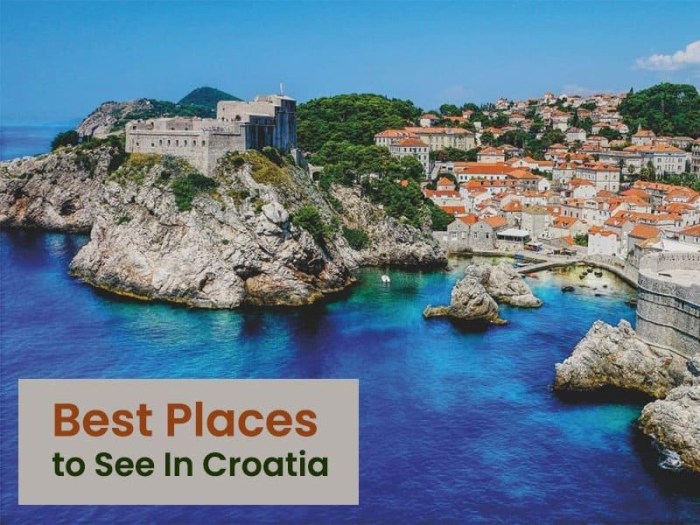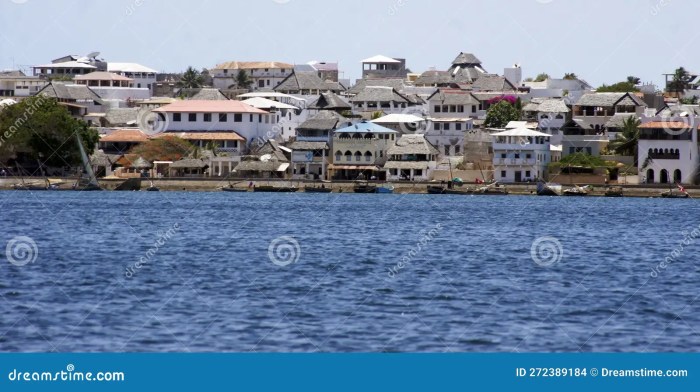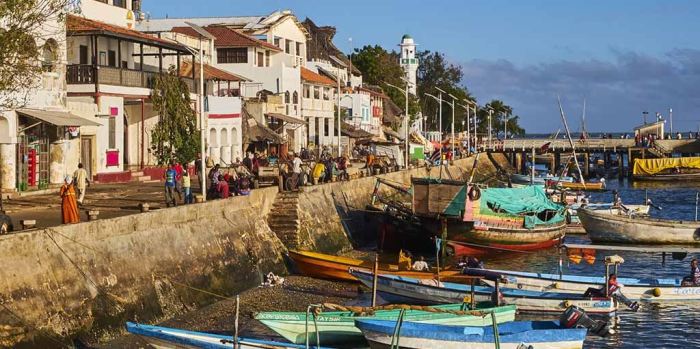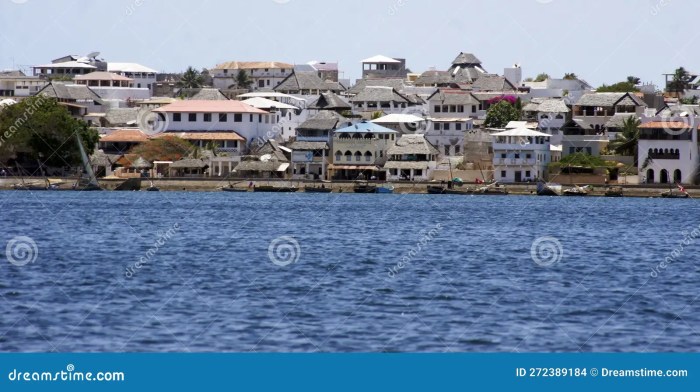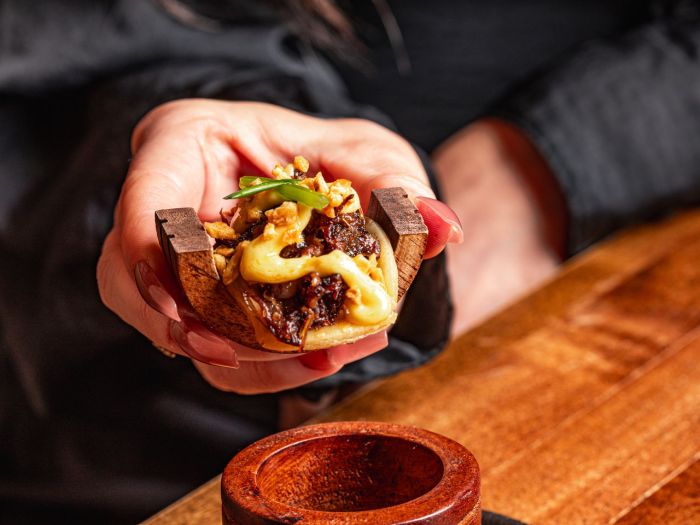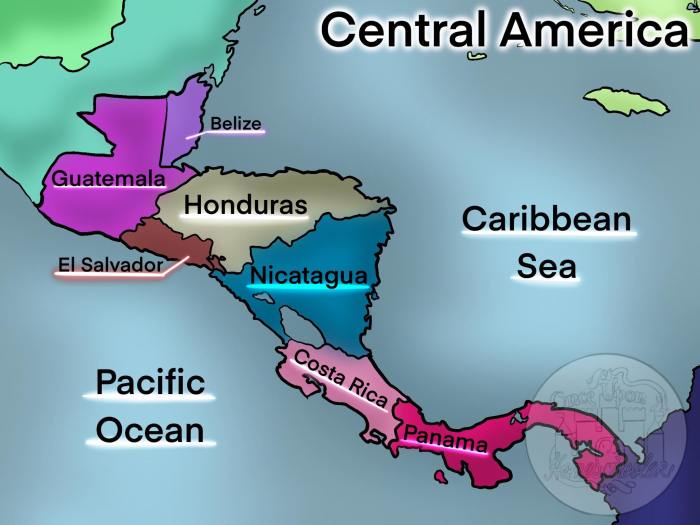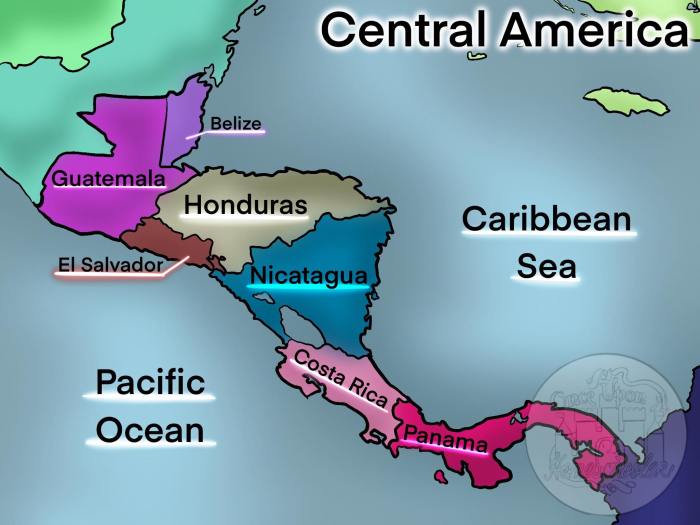Best places to visit in Croatia: From stunning coastal towns to historic islands and breathtaking national parks, Croatia offers a diverse range of experiences for every traveler. This guide dives deep into the hidden gems and iconic landmarks, providing a comprehensive overview of the best destinations for your Croatian adventure. Discover the vibrant culture, delicious cuisine, and captivating history that awaits.
This detailed exploration will cover everything from the most popular coastal destinations to the lesser-known island hideaways and national parks. We’ll explore the region’s rich history and culture, the best ways to navigate the country, and the must-try Croatian dishes. Whether you’re seeking relaxation on the beach, adventure in the mountains, or a deep dive into the nation’s history, this guide has you covered.
Introduction to Croatia: Best Places To Visit In Croatia
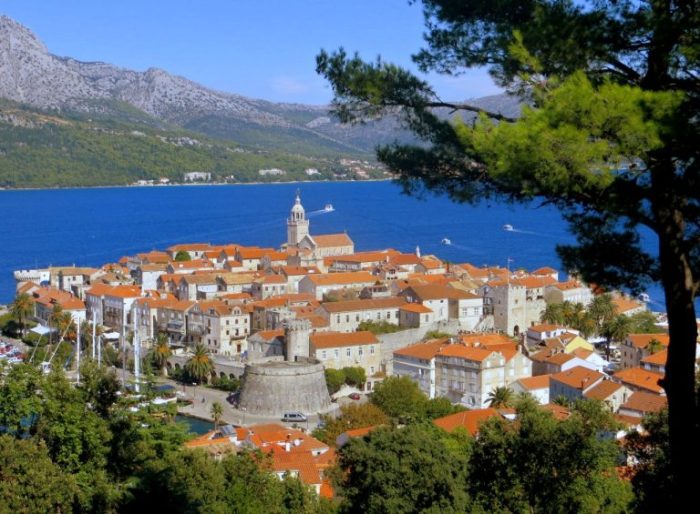
Croatia, a captivating Balkan nation, boasts a rich tapestry of history, culture, and stunning landscapes. From its Adriatic coastline, dotted with picturesque islands, to its dramatic Dinaric Alps, the country offers a diverse range of experiences for every traveler. The nation’s history is deeply intertwined with the Roman Empire, the Austro-Hungarian Empire, and the Yugoslav era, leaving behind a legacy of architectural marvels and cultural traditions.This diverse heritage is reflected in Croatia’s vibrant culture, evident in its cuisine, music, and artistic expressions.
The country’s unique blend of influences has resulted in a distinct identity, which is readily apparent in the numerous historical sites, charming towns, and bustling cities that dot its landscape. These attractions, combined with the natural beauty of the Croatian countryside, make it a compelling destination for those seeking a memorable vacation.
Regional Overview
Croatia is divided into several distinct regions, each with its own unique characteristics. Understanding these regional differences allows travelers to tailor their experiences to their specific interests. From the bustling coastal towns to the tranquil mountain villages, Croatia offers a diverse range of experiences, each region showcasing a particular aspect of the country’s charm.
| Region | Brief Description | Notable Landmarks | Recommended Activities |
|---|---|---|---|
| Dalmatian Coast | Croatia’s iconic coastline, featuring picturesque towns, charming islands, and stunning beaches. | Dubrovnik, Split, Hvar, Korcula | Island hopping, swimming, sunbathing, exploring historical sites, indulging in local cuisine |
| Istria | A peninsula in the northwest of Croatia, known for its rolling hills, vineyards, and charming medieval towns. | Pula, Rovinj, Motovun | Wine tasting, exploring Roman ruins, hiking, relaxing on the beaches |
| Kvarner Bay | An area north of the Dalmatian Coast, featuring stunning islands, picturesque villages, and the charming city of Rijeka. | Rijeka, Krk Island, Cres Island | Boat trips, visiting charming villages, exploring the natural beauty of the islands |
| Zagorje | A mountainous region inland, known for its picturesque landscapes, hiking trails, and charming villages. | Plitvice Lakes National Park, Sljeme | Hiking, exploring the countryside, enjoying the tranquility of nature |
Coastal Regions
The Croatian coastline is a major draw for tourists, with its beautiful beaches, picturesque towns, and stunning islands. The Dalmatian Coast, in particular, is renowned for its rich history, dating back to Roman times. Numerous historic sites and charming towns, such as Dubrovnik and Split, are located along this coast. The islands of the Adriatic Sea offer a unique opportunity to experience the beauty of the Croatian coast.
Whether it is swimming, sunbathing, exploring ancient cities, or simply enjoying the fresh sea air, the coastal regions provide a wealth of activities.
Interior Regions
Croatia’s interior regions, such as Zagorje and Lika, offer a contrasting experience to the coastal areas. These mountainous regions are characterized by their lush forests, picturesque villages, and hiking trails. The Plitvice Lakes National Park, a UNESCO World Heritage Site, is a popular destination for those seeking stunning natural beauty. Exploring these regions provides a different perspective of Croatia, one that emphasizes the beauty of its natural environment.
Coastal Destinations
Croatia’s stunning coastline offers a diverse range of experiences, from bustling port cities to secluded fishing villages. Each town boasts its own unique charm, catering to different tastes and interests. Whether you’re seeking vibrant nightlife, historical exploration, or tranquil beach relaxation, Croatia’s coastal towns have something to offer.Exploring Croatia’s coastal towns reveals a captivating tapestry of history, culture, and natural beauty.
Croatia boasts stunning coastlines and historic cities, making it a fantastic travel destination. For a taste of something different, check out the darby montana travel guide for tips on exploring the natural beauty and charming towns of Montana. Ultimately, Croatia’s diverse landscapes and rich culture make it a truly unforgettable experience for any traveler.
The Adriatic Sea’s influence is palpable, shaping the architecture, culinary traditions, and overall atmosphere of these destinations. From the charming cobblestone streets of Dubrovnik to the picturesque islands scattered along the coast, the experience of visiting Croatia’s coastal towns is as diverse as the destinations themselves.
Top 5 Coastal Destinations
Croatia’s coastal regions are packed with vibrant towns, each with its own distinct appeal. To help you narrow down your choices, here are five of the most popular and captivating destinations.
- Dubrovnik: Known for its medieval walls, Dubrovnik is a UNESCO World Heritage Site and a must-see for any visitor. The city’s well-preserved architecture, charming narrow streets, and panoramic views of the Adriatic Sea create a truly unforgettable atmosphere. It’s a perfect blend of history and modern amenities, with a vibrant nightlife and excellent dining options. Numerous tours and activities are available, from walking tours to boat excursions.
A great choice for families and couples alike, Dubrovnik offers something for everyone.
- Split: Split, Croatia’s second-largest city, boasts a rich history and a lively atmosphere. The Diocletian’s Palace, a remarkably preserved Roman palace, is the city’s iconic landmark. Split offers a mix of historical sites, modern amenities, and beautiful beaches. The city’s vibrant cultural scene, with numerous festivals and events throughout the year, is a major draw. It’s a fantastic choice for those seeking a balance of history, culture, and relaxation.
- Hvar: Hvar is a popular island destination, renowned for its beautiful beaches, lively nightlife, and stunning scenery. The island’s picturesque harbor, surrounded by lush greenery, offers a tranquil escape. Hvar Town, with its cobblestone streets and charming cafes, is a perfect place to stroll and soak up the atmosphere. A great option for those who enjoy a blend of relaxation, adventure, and socialising.
The island also offers a variety of watersports, from swimming and sunbathing to sailing and diving.
- Zadar: Nestled on the Adriatic coast, Zadar boasts a unique blend of historical charm and modern amenities. The city is known for its stunning architecture, with a mix of Roman and Venetian influences. The Sea Organ, a musical instrument powered by the waves, is a truly remarkable sight. Zadar offers a plethora of activities, including exploring the city’s historical sites, visiting nearby islands, and enjoying the local cuisine.
This is a good choice for those who enjoy exploring history and nature.
- Rovinj: Rovinj, situated on the Istrian Peninsula, is a picturesque coastal town with a rich maritime history. The town’s unique architecture, with its colourful houses clinging to the hills, creates a captivating ambiance. Rovinj is renowned for its beautiful beaches and its vibrant waterfront. It’s a perfect choice for those seeking a tranquil escape, with stunning views and a welcoming atmosphere.
The town offers a wide array of activities, from exploring the local markets to taking boat trips to nearby islands.
Cost Comparison of Coastal Destinations
The cost of visiting Croatia’s coastal destinations can vary significantly depending on the time of year, the type of accommodation, and the activities chosen. This table provides a general comparison of costs in different coastal towns.
| Destination | Average Accommodation Cost (per night) | Average Food Cost (per meal) | Average Activity Cost (per person) |
|---|---|---|---|
| Dubrovnik | €150-€300 | €25-€40 | €20-€50 |
| Split | €100-€250 | €20-€35 | €15-€40 |
| Hvar | €120-€350 | €25-€45 | €25-€60 |
| Zadar | €80-€200 | €18-€30 | €10-€35 |
| Rovinj | €100-€250 | €20-€35 | €15-€40 |
Note: These are average costs and may vary depending on specific choices.
Island Hopping Adventures
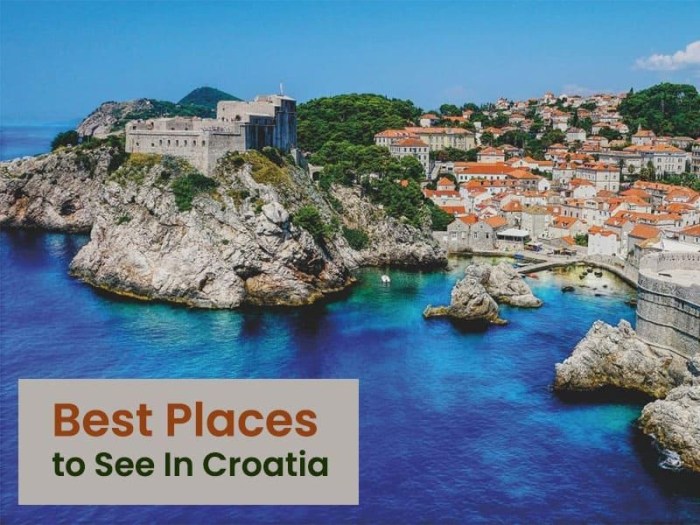
Croatia’s archipelago, a breathtaking tapestry of islands, offers an unparalleled experience for those seeking adventure and relaxation. Exploring these islands, from the bustling harbors to secluded coves, unveils a unique blend of history, culture, and natural beauty. Imagine yourself navigating crystal-clear waters, discovering hidden beaches, and immersing yourself in the rich heritage of each island.Island hopping is more than just a vacation; it’s an immersion into the heart of Croatian culture and nature.
Each island boasts its own distinct character, from the bustling towns and historic sites to the tranquil landscapes and secluded coves. The journey itself is a journey of discovery, and the rewards are plentiful.
Exploring the Diverse Islands
The Croatian islands vary significantly in size, character, and attractions. From the mainland’s immediate surroundings to the more remote stretches of the Adriatic, the islands form a fascinating mosaic. Each offers a different flavour, making island hopping a dynamic experience.
Travel Options and Logistics
Ferry services are the most common and convenient way to traverse the archipelago. Ferries connect major islands, and schedules are generally well-established, allowing for seamless transitions between destinations. Consider purchasing a multi-day pass if you plan to travel extensively. This can save you money and time.
Island Highlights and Recommendations
- Hvar: Known for its vibrant nightlife, charming towns, and stunning beaches. Ideal for a mix of relaxation and adventure, Hvar is a popular choice, especially in the summer. Top attractions include the historic Hvar Town, the secluded beaches of Pakleni Islands, and the impressive Fortica Fortress.
- Korcula: Famous for its rich history and picturesque scenery. Korcula offers a slower pace of life and a chance to explore its ancient roots. The town of Korcula, with its well-preserved architecture, is a must-see. Explore the nearby beaches and coves for a tranquil escape. The ideal time to visit is spring or fall, avoiding the summer crowds.
- Mljet: A haven of tranquility, Mljet is renowned for its two stunning saltwater lakes. The island is perfect for nature lovers. The ideal time to visit is spring or fall. Explore the Mljet National Park and discover its lush greenery and hidden coves.
- Brac: Famous for its stunning beaches, particularly Zlatni Rat (Golden Horn). Brac offers a mix of relaxation and activity, ideal for families and couples. The island’s dramatic coastline is perfect for exploring. The best time to visit is during the shoulder seasons to avoid the peak summer crowds.
- Pag: This island is known for its stunning beaches, windsurfing, and charming villages. Pag is an excellent choice for those seeking a mix of relaxation and adventure. Explore the secluded beaches, experience the local culture, and try out the windsurfing opportunities. The best time to visit is during the spring or fall months.
These are just a few examples of the many beautiful islands to explore. With its rich history, stunning scenery, and vibrant culture, Croatia’s islands are sure to captivate any traveler.
National Parks and Nature Reserves
Croatia boasts a stunning array of national parks and nature reserves, offering a diverse range of natural landscapes and opportunities for outdoor enthusiasts. These protected areas showcase the country’s rich biodiversity, from lush forests and pristine coastlines to dramatic mountains and crystalline lakes. Exploring these parks provides a unique insight into Croatia’s natural beauty and allows visitors to appreciate the importance of conservation efforts.
Exploring Croatia’s Natural Treasures
Croatia’s national parks and nature reserves are havens for diverse ecosystems and wildlife. These protected areas provide a vital refuge for a multitude of plant and animal species, many of which are endemic to the region. The varied landscapes, from the rugged Adriatic coastline to the rolling hills of the interior, offer unparalleled opportunities for hiking, kayaking, and wildlife spotting.
Plitvice Lakes National Park
Plitvice Lakes National Park is renowned for its stunning turquoise lakes connected by cascading waterfalls. The park’s unique travertine formations create a mesmerizing spectacle of natural beauty. The diverse flora and fauna, including various bird species and mammals, make it a haven for nature lovers. Hiking trails wind through the park, offering breathtaking views of the lakes and waterfalls.
The best time to visit is during the spring or fall, when the weather is pleasant and crowds are smaller.
Krka National Park
Krka National Park is a beautiful national park featuring the iconic Skradinski Buk waterfall. The park also includes numerous smaller waterfalls and picturesque canyons, creating a captivating landscape. Visitors can enjoy swimming, hiking, and boat tours along the Krka River. The best time to visit is in spring and fall for pleasant temperatures and fewer crowds. The park’s rich ecosystem supports a variety of bird species and fish, making it a popular destination for birdwatchers and anglers.
Kornati National Park
Kornati National Park is an archipelago of islands in the Adriatic Sea, characterized by stunning coastal scenery and diverse marine life. Visitors can enjoy boat tours to explore the secluded bays and islets. The park is a haven for boaters and water enthusiasts. The best time to visit is during the summer months for warm weather and pleasant water temperatures.
Table of Croatia’s National Parks
| Park Name | Brief Description | Activities | Accessibility |
|---|---|---|---|
| Plitvice Lakes National Park | Series of interconnected lakes and waterfalls | Hiking, boat tours, photography | Well-developed infrastructure, accessible by car and public transport |
| Krka National Park | Iconic waterfalls and canyons | Swimming, hiking, boat tours, birdwatching | Well-developed infrastructure, accessible by car and public transport |
| Kornati National Park | Archipelago of islands in the Adriatic | Boat tours, island hopping, snorkeling, diving | Boat access primarily, some ferry connections |
Historical and Cultural Sites
Croatia boasts a rich tapestry of history, woven from Roman legacies, medieval kingdoms, and Austro-Hungarian influences. Exploring these historical and cultural sites offers a profound understanding of the nation’s past and its enduring impact on the present. These sites, from grand castles to ancient settlements, are tangible reminders of the people who shaped Croatia into the vibrant country it is today.
Important Historical and Cultural Sites
Croatia’s historical and cultural sites offer a captivating journey through time. From the remnants of Roman settlements to the grandeur of medieval castles, each location tells a unique story. These sites are not just monuments; they are living echoes of the past, preserving traditions, customs, and values. These sites provide a glimpse into the lives of those who came before us, fostering a deeper appreciation for the country’s heritage.
A Glimpse into the Past: A Table of Historical Sites
These historical sites provide tangible links to Croatia’s past, from Roman influences to the rise of medieval kingdoms. Each site offers a unique perspective on the region’s history and culture.
| Site Name | Brief Description | Historical Significance | Accessibility |
|---|---|---|---|
| Diocletian’s Palace, Split | A remarkably preserved Roman palace, now a UNESCO World Heritage site and the heart of Split. | Built by Emperor Diocletian in the 3rd century AD, it exemplifies Roman architecture and urban planning. Its well-preserved layout provides insights into the daily lives of the people who lived there. | Excellent; easily accessible by public transport and walking. Guided tours are available. |
| Zagreb Cathedral | A prominent Gothic cathedral in Zagreb, Croatia’s capital. | Built over several centuries, the cathedral reflects the city’s evolving history. It’s a significant example of medieval architecture in Croatia and served as a central place of worship and a symbol of power for centuries. | Excellent; easily accessible by public transport and walking. |
| Trogir | A historic town on the Dalmatian coast, with a well-preserved medieval core. | Trogir’s old town is a UNESCO World Heritage site, showcasing a blend of Roman and medieval influences. The architecture, narrow streets, and fortified walls provide a fascinating glimpse into the town’s history. | Excellent; easily accessible by boat and public transport. |
| Plitvice Lakes National Park | A stunning natural park featuring cascading lakes and waterfalls. | While primarily a natural wonder, the park’s management and development throughout history show how human activity and natural processes interact. The lakes and waterfalls were shaped by the interplay of geological forces and human interaction over time. | Excellent; accessible by public transport and rental cars. Hiking trails provide access to various viewpoints. |
| Dubrovnik Walls | A series of well-preserved city walls that encircle the historic city of Dubrovnik. | These formidable walls, built over centuries, offer an important insight into the military strategies and defensive capabilities of the region. They were crucial in protecting the city from invasions. | Excellent; easily accessible by walking or using the city’s tram system. Guided tours are also available. |
Active Experiences
Croatia offers a vibrant tapestry of outdoor adventures, catering to every level of fitness and enthusiasm. From challenging hikes through breathtaking national parks to exhilarating water sports along the stunning coastline, there’s something for everyone to explore. This section delves into the exciting possibilities of active experiences in Croatia, highlighting specific activities, locations, and tips for planning your own unforgettable adventure.Croatia’s diverse landscapes, ranging from the dramatic peaks of the Dinaric Alps to the crystal-clear waters of the Adriatic Sea, provide an unparalleled playground for outdoor enthusiasts.
The numerous hiking trails, biking routes, and water sports options offer a unique way to immerse yourself in the Croatian culture and natural beauty.
Hiking Trails
Croatia boasts a wealth of hiking trails, catering to varying experience levels. From gentle strolls through picturesque valleys to challenging climbs to panoramic viewpoints, there’s a trail for every hiker. The trails often wind through charming villages, revealing glimpses of local life and traditions. National parks like Paklenica and Plitvice Lakes National Park offer exceptional hiking opportunities.
Croatia boasts stunning coastal towns and islands, but for a truly unforgettable beach experience, you should check out the beautiful beaches of the Dalmatian Coast. While exploring the best places to visit in Croatia, consider comparing it to Caladesi Island State Park, which is often touted as the best beach in Florida, caladesi island state park best beach in florida.
The turquoise waters and white sand of the park offer a different kind of breathtaking beauty. Ultimately, Croatia still holds a special place for me as one of the most beautiful places in Europe, though!
- Paklenica National Park features challenging, rocky trails that reward hikers with stunning views of the surrounding mountains and deep gorges. Expect steep ascents and descents, requiring good physical fitness.
- Plitvice Lakes National Park offers a more accessible and scenic hiking experience, with well-maintained trails winding around the stunning lakes and waterfalls. The varied terrain and picturesque views make it a popular choice for families and experienced hikers alike.
- The Biokovo Mountain range, near Makarska, presents a series of trails suitable for both experienced and casual hikers. Enjoy panoramic views of the coastline and surrounding villages.
Biking Routes
Croatia’s cycling infrastructure is steadily improving, providing excellent opportunities for exploring the countryside and coastal regions. The country’s varied terrain offers options for leisurely rides along the coast or more challenging climbs through the mountains. Many routes pass through charming villages, allowing you to experience local culture and enjoy delicious Croatian cuisine.
- The cycling routes along the coast offer a fantastic way to explore the picturesque towns and villages while enjoying the fresh sea air. The coastal roads often have designated bike lanes, making it safe and enjoyable for all.
- The routes through the islands provide a unique opportunity to explore the beauty of the Croatian archipelago. The well-maintained trails and stunning scenery make for an unforgettable experience.
- The mountain biking trails in the Dinaric Alps present more challenging terrain and offer stunning views of the surrounding landscapes. These trails are often less crowded, allowing for a more secluded experience.
Water Sports
Croatia’s stunning coastline and numerous islands provide ample opportunities for a wide array of water sports. From swimming and sunbathing to kayaking and paddleboarding, the possibilities are endless. The clear waters and calm bays offer ideal conditions for enjoying these activities.
- Kayaking and paddleboarding are popular choices for exploring the hidden coves and secluded beaches along the coast. Many rentals are available at various locations, offering convenient access to the water.
- Sailing and boating tours provide an exceptional way to experience the beauty of the Croatian islands. Numerous marinas offer a wide range of vessels for hire, allowing you to explore the islands at your own pace.
- Numerous beaches offer excellent opportunities for swimming and sunbathing, and many water sports centers offer lessons and equipment rentals. These locations are ideal for families and those seeking relaxation.
Planning Tips
Planning your active experiences in Croatia involves considering the time of year, the level of difficulty of the activity, and the necessary equipment. Checking weather forecasts and trail conditions before heading out is essential. Booking accommodations and transportation in advance is highly recommended, especially during peak season.
- Check the weather forecast and trail conditions before heading out. This will help you to plan your activities accordingly and avoid any unpleasant surprises.
- Pack appropriate clothing and footwear for the activity. This includes comfortable hiking boots, sunscreen, and a hat. Proper hydration is essential.
- Bring necessary equipment, such as sunscreen, a hat, and sunglasses. Consider renting equipment if needed, or bring your own.
Activity Comparison Table
| Activity | Location | Difficulty Level | Description |
|---|---|---|---|
| Hiking | Paklenica National Park, Biokovo Mountain | Moderate to Difficult | Challenging trails with stunning views, suitable for experienced hikers. |
| Cycling | Coastal routes, Island routes | Easy to Moderate | Scenic routes along the coast and through the islands. |
| Kayaking/Paddleboarding | Brač, Hvar, Mljet Islands | Easy to Moderate | Explore hidden coves and secluded beaches. |
Food and Drink
Croatia’s culinary scene is a vibrant tapestry woven from the country’s rich history and diverse geography. From the sun-drenched Dalmatian coast to the rolling hills of inland regions, each region boasts its own unique culinary traditions, reflecting the local ingredients and flavors. The food is a celebration of fresh, seasonal produce, often featuring seafood, meats, and hearty vegetables.
The emphasis on simple, wholesome ingredients, coupled with traditional preparation methods, results in dishes that are both delicious and deeply satisfying.
Traditional Croatian Cuisine
Croatian cuisine is a testament to the country’s Mediterranean heritage, blending influences from Italy, Greece, and the Balkans. A focus on fresh, seasonal ingredients, coupled with hearty portions and satisfying flavors, is characteristic. The use of olive oil, herbs, and spices is prevalent, creating a rich and aromatic culinary experience. The variety of dishes, reflecting the diversity of the country’s regions, makes it a true delight for food lovers.
Local Ingredients and Culinary Creations
The Croatian landscape provides a bounty of fresh ingredients. Coastal regions thrive on the catch of the day, featuring succulent seafood like grilled fish, octopus, and shrimp. Inland, farmers cultivate a rich variety of vegetables and fruits, contributing to hearty stews, flavorful salads, and sweet desserts. Olive oil, a staple ingredient, adds a unique richness and aroma to numerous dishes.
Local cheeses, often made with sheep’s or cow’s milk, also play a significant role, complementing many culinary creations.
Stories Behind Famous Croatian Dishes
Many Croatian dishes hold stories that reflect the country’s history and culture. One example is the hearty “peka,” a traditional dish of roasted meat and vegetables. Its roots lie in the need for simple, yet nourishing meals in the past, where meats and vegetables were cooked together in large pots. This showcases the ingenuity and resourcefulness of the Croatian people.
Another example is “štruklji,” filled pastries, which often have regional variations, reflecting the diversity of the culinary traditions across the country. The preparation and ingredients may differ from region to region, yet the love for family and shared meals remains a constant thread.
Unique Croatian Wine Regions and Products
Croatia boasts a diverse range of wine regions, each producing unique and exquisite wines. The Dalmatian coast, with its warm climate, is renowned for its white wines, often made from varieties like Malvazija and Plavac Mali. Inland regions, particularly Istria, produce full-bodied reds and crisp whites, showcasing the diverse terroir. The winemaking tradition is deeply rooted in the country’s history, with many vineyards maintaining age-old techniques and methods.
The varied terrain and microclimates contribute to the unique character of Croatian wines, reflecting the rich biodiversity of the country.
Traditional Croatian Dishes
| Dish | Description | Origin |
|---|---|---|
| Peka | A hearty dish of roasted meat and vegetables, often featuring lamb, pork, or chicken, cooked in a large pot with onions, garlic, and herbs. | Inland regions, often a communal meal. |
| Cevapcici | Grilled minced meat skewers, usually spiced with paprika, garlic, and onions. Often served with a side of ajvar (red pepper spread). | Balkan region, common in many Croatian cities and towns. |
| Dalmatian Fish Stew (Rižoto s Ribom) | A flavorful seafood stew, typically featuring fish, mussels, clams, and rice, simmered in a rich broth with tomatoes, onions, and garlic. | Coastal regions, a hearty and popular meal. |
| Štruklji | Filled pastries, often with cheese, spinach, or potatoes. They are typically baked or fried. | Various regions, a popular pastry. |
| Fritule | Sweet doughnuts, often coated in powdered sugar, typically eaten during holidays. | Across Croatia, a beloved sweet treat. |
Accommodation Options
Croatia offers a diverse range of accommodation options to suit every traveler’s needs and budget. From luxurious hotels to cozy apartments, you’ll find options catering to solo adventurers, couples, families, and groups. Understanding the different types and their associated characteristics is crucial for selecting the perfect place to stay during your Croatian adventure.Finding the right accommodation can significantly impact your overall travel experience.
Whether you prefer the convenience of a hotel, the flexibility of an apartment, or a unique experience in a guesthouse, the right choice ensures a comfortable and memorable stay. Consider factors like your travel style, budget, and the location you want to be in when making your decision.
Hotel Accommodation, Best places to visit in croatia
Hotels provide a range of services, including housekeeping, restaurant facilities, and sometimes even swimming pools or spas. They offer a convenient and comfortable stay, especially for those seeking a hassle-free experience. Larger hotels often have dedicated staff to assist with any needs. However, they can sometimes be more expensive than other options. The level of service and amenities vary greatly depending on the hotel’s category and location.
For example, a boutique hotel in a historic city center will likely offer a more personalized experience than a large chain hotel on a beach.
Apartments and Holiday Homes
Apartments and holiday homes offer more space and privacy compared to hotels. These accommodations often include fully equipped kitchens, allowing for greater flexibility in meal preparation. This can lead to significant cost savings, particularly if you’re traveling with a family or group. The ability to cook your own meals and enjoy the freedom of a private space is a significant advantage.
Finding a well-located apartment can be crucial, as it might be more difficult to access local amenities compared to a hotel.
Other Lodging Choices
Beyond hotels and apartments, Croatia presents a variety of other lodging choices. Guesthouses, hostels, and campsites cater to different budgets and preferences. Guesthouses often provide a more personalized and local experience, offering insights into the local culture. Hostels are a great option for budget-conscious travelers seeking social interaction and a vibrant atmosphere. Campsites offer a more adventurous experience, immersing you in nature while still offering basic amenities.
Croatia boasts stunning coastal towns and national parks, perfect for family vacations. Thinking about planning a trip with the kids? Before you book, check out the details on global entry for kids, which can streamline your travel process if you’re bringing young ones along. global entry for kids what to know Once you’ve got that sorted, you can focus on choosing the ideal Croatian destination for your family adventure, from Dubrovnik’s historic charm to the Plitvice Lakes’ natural beauty.
The choice depends on your priorities and the specific atmosphere you seek.
Choosing the Right Accommodation
Consider your travel style, budget, and desired location when selecting your accommodation. If convenience and a wide array of services are your priority, a hotel might be the best option. For more space, flexibility, and cost-effectiveness, apartments or holiday homes are excellent choices. Other lodging options cater to specific preferences, whether it’s a more local experience, a social environment, or an adventurous outdoor setting.
Factors like the time of year and the popularity of destinations will also influence the availability and pricing of accommodation.
Accommodation Comparison Table
| Accommodation Type | Description | Price Range | Amenities |
|---|---|---|---|
| Hotels | Fully serviced accommodations with varying levels of luxury. | Mid-range to high-end | Room service, restaurants, pools, spas, concierge services |
| Apartments | Self-catering accommodations with kitchens and living areas. | Mid-range to budget-friendly | Kitchens, laundry facilities, living spaces, sometimes balconies or terraces |
| Guesthouses | Locally owned accommodations offering a more personal experience. | Budget-friendly to mid-range | Breakfast, common areas, local recommendations, sometimes with a homely feel |
| Hostels | Social accommodations perfect for budget travelers. | Budget-friendly | Dorms, common areas, social events, often with kitchen facilities |
| Campsites | Outdoor accommodations offering a more immersive nature experience. | Budget-friendly | Basic amenities, often with access to nature trails, restrooms, and showers |
Practical Information
Planning a trip to Croatia requires careful consideration of several practical aspects. Understanding the visa requirements, currency, local customs, transportation options, and necessary documents is crucial for a smooth and enjoyable experience. This section provides essential information to help you navigate the logistics of your Croatian adventure.
Visa Requirements
Croatia is part of the Schengen Area. Citizens of many countries can enter visa-free for tourism stays of up to 90 days within a 180-day period. However, it’s essential to check the specific visa requirements for your nationality on the Croatian Ministry of Foreign and European Affairs website. This will ensure you are prepared and avoid potential issues at the border.
Double-checking your passport’s validity is equally important, as it should be valid for at least three months beyond your intended stay.
Currency and Payment
The Croatian kuna (HRK) is the official currency. While credit cards are widely accepted in tourist areas, it’s always a good idea to have some cash on hand, particularly for smaller purchases and in less populated areas. Exchange rates fluctuate, so it’s advisable to research current exchange rates before your trip and consider using a currency converter app for quick reference.
ATMs are readily available throughout the country, allowing you to easily withdraw cash.
Local Customs and Etiquette
Croatian culture is generally welcoming to tourists. Respecting local customs and etiquette will enhance your experience. Learn a few basic Croatian phrases, such as greetings and thank yous. Dress modestly when visiting churches or other religious sites. Be mindful of noise levels, especially in residential areas.
It’s important to respect local traditions and practices.
Transportation Options
Croatia offers various transportation options, catering to different budgets and preferences. Domestic flights connect major cities, offering a faster way to travel between them. Buses are a cost-effective and convenient way to travel, offering frequent services and reaching numerous destinations. Ferries are essential for traveling between islands and coastal towns. Car rentals are an excellent option for exploring the mainland and islands at your own pace, but consider the potential costs of parking and navigating the roads, especially in the city centers.
Rental cars can also be useful for exploring national parks and nature reserves.
Navigating Local Transportation
Public transportation in Croatia is generally well-organized, but it’s helpful to familiarize yourself with the schedules and routes beforehand. Purchase tickets in advance where possible to save time and potentially money. Knowing the local language, even basic phrases, can be helpful when communicating with drivers or staff. Consider purchasing a travel pass if you plan on using public transport extensively.
Using a local navigation app or having a printed map can be very useful when navigating by public transport or car.
Necessary Documents for Entry
Valid passport or travel document is a prerequisite for entry into Croatia. Ensure it’s valid for at least three months beyond your intended stay. Depending on your nationality, you may also need a visa. It’s crucial to check visa requirements for your specific nationality well in advance of your trip. Carry copies of important documents, such as your passport and flight confirmations, in case of loss or damage.
Essential Information Summary
| Topic | Information | Additional Resources |
|---|---|---|
| Visa Requirements | Check specific visa requirements for your nationality on the Croatian Ministry of Foreign and European Affairs website. | Croatian Ministry of Foreign and European Affairs website |
| Currency | Croatian kuna (HRK). Credit cards are widely accepted in tourist areas, but having cash is recommended. | Currency converter apps |
| Local Customs | Respect local customs and etiquette. Learn basic Croatian phrases. | Cultural information websites |
| Transportation | Flights, buses, ferries, and car rentals are available. | Transportation providers’ websites |
| Documents | Valid passport or travel document, possibly a visa. | Embassy websites |
Last Point
In conclusion, Croatia boasts an extraordinary tapestry of experiences, waiting to be explored. From the vibrant energy of its coastal cities to the serene beauty of its islands and national parks, Croatia promises an unforgettable journey. This guide provides a starting point for your Croatian adventure, helping you discover the best places to visit, and providing essential information for planning your trip.
Get ready to immerse yourself in the charm and beauty of this captivating Balkan nation!
